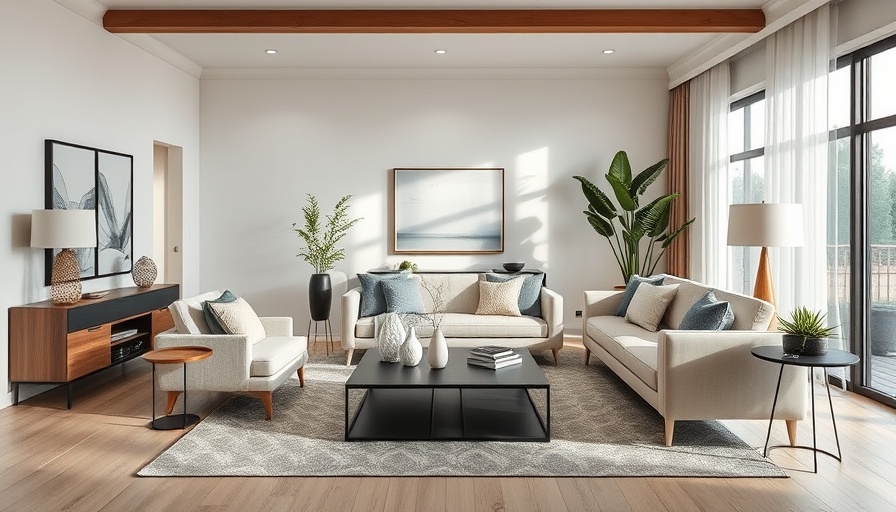
Master the Art of Furniture Staging to Boost Your Home's Appeal
As a homeowner preparing to sell your property, first impressions matter. An aesthetically pleasing space can significantly influence potential buyers' perceptions and, subsequently, the sale price. If you're looking to give your home a competitive edge, furniture staging is a powerful yet often overlooked tool. By strategically arranging furniture and using decor intelligently, you create a welcoming atmosphere that helps buyers envision themselves living there.
Understanding the Basics of Staging
Furniture staging involves arranging and decorating your home to highlight its best features. It’s not just about making everything look nice; it’s about creating an emotional connection. Studies show that well-staged homes sell faster and often at higher prices than those that are left bare or cluttered. Consider cleaning out personal items and replacing them with neutral decor that appeals to a wide array of potential buyers.
Start with a Clean Slate: Decluttering is Key
Before you even think about staging, take a good hard look at your belongings. Clutter can lead to feelings of stress and chaos. To create a serene environment, remove unnecessary items. This doesn't just make your space feel larger but also allows the architectural elements of your home to shine. Keep in mind that potential buyers will want to visualize their own possessions in the space, so the less personal your design, the better.
Strategic Furniture Arrangement for Flow and Functionality
Your furniture arrangement should feel natural and encourage easy movement through the space. One helpful strategy is to focus on the gathering zones—this might be a living room or a kitchen area. Arrange furniture to facilitate conversation and warmth rather than isolation. For instance, the seating should be positioned to allow visual flow towards windows or fireplaces, enhancing the inviting feel of the room.
Color and Light: Influencing Mood with Design
Colors influence feelings and can sway decisions. Using light, neutral shades presents a clean canvas that brightens up the room and makes it feel more spacious. Accent your decor with splashes of color through cushions or artwork to add personality without overwhelming potential buyers. Additionally, leverage natural light; ensure curtains are drawn back to let sunlight pour in, creating a cheerful atmosphere.
Accessories: Small Touches that Make a Big Impact
When it comes to staging, accessories are your best friends. A few carefully chosen pieces can transform a space. Think about adding fresh flowers to a dining room table or decorative pillows to your couches. Mirrors can help reflect light and make a space appear larger, while strategically placed rugs can define areas within open-concept layouts.
Engaging the Senses: Creating an Inviting Home
Staging is more than just a visual feast; it’s about creating an experience. Consider using subtle scents, like freshly baked cookies or brewed coffee, during an open house. Clean and inviting aromas can evoke warmth and comfort, and these sensory elements often make the experience of walking through the home more memorable for buyers.
Incorporating Technology for Modern Appeal
In today’s digital age, smart home technology can also appeal to potential buyers. From smart lighting to automated thermostats, integrating technology into your staging can highlight a home’s modern features. Make sure to showcase these smart devices prominently; you can even create a ‘tech corner’ in your living space where buyers can interact with these systems during home tours.
Conclusion: Staging for Success
By thoughtfully arranging furniture, decluttering, and enhancing the ambiance of your home, you significantly increase the likelihood of a swift and profitable sale. Embrace the art of staging not just as a task, but as a vital step in your journey as a home seller. Remember that your ultimate goal is to enable potential buyers to see themselves in your space. Take action today to elevate your home’s appeal and pave the way for a successful sale!
 Add Row
Add Row  Add
Add 




Write A Comment